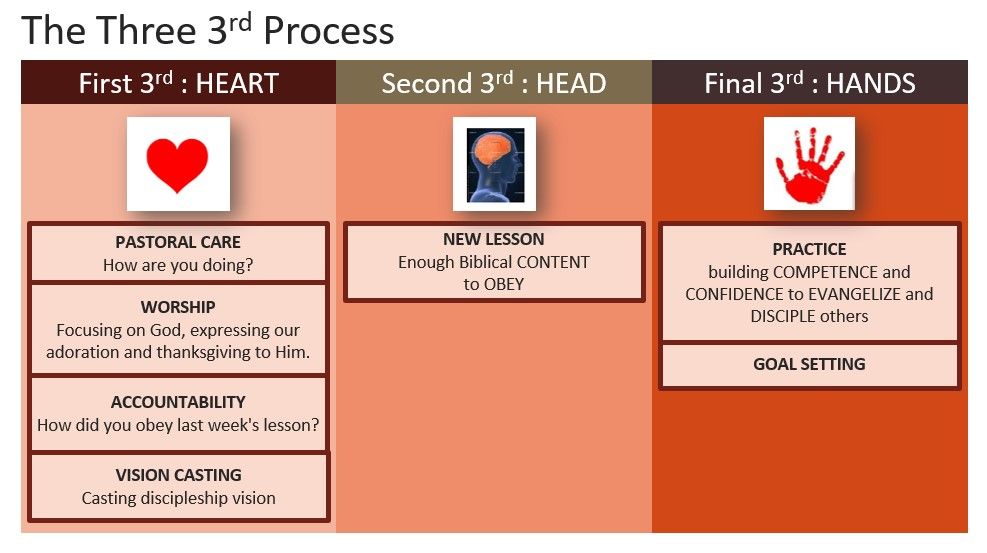How will you know when your church plant is ready for you to leave?
Can you prepare for that day from the beginning of the work?
In our blog, “https://www.goandplant.com/having-an-exit-plan-from-the-start,” we noted that an Exit Plan, or Transition Plan, is our vision of the essential parts of the planted church that we need to see in place and functioning that will indicate to us that this church will continue to thrive without us and that our work as church planters is done. When these are present, we know that we can either transition out to a new role such as equipper and mentor, or we can move on to begin a work in a new area.
“It’s time. They don’t need us anymore.”
We noted that an Exit Plan…
1. Keeps all team members focused and working together on clear goals.
2. Avoids sideways energy – It helps you not put time, energy, and resources into good things that don't help you get to where you as a team want to go.
3. Helps define short and long-term goals
4. Inspires and encourages the team in making progress
5. Helps you not stay too long or leave too soon
Context
Your Exit Plan or Transition Plan will look different depending on the kind of context you are working in and the kind of church you believe you need to establish. For example, the Exit Plan for a house church plant may be quite different than for a larger, urban church. We would like to look together at various examples.
Today I want to look at an example of an Exit Plan from one church planting team. We were planting a larger urban church in an open country. Here was our 9 point Exit Plan.
Exit Plan -
Pathway Community Church - Philippines
The Missionary team will have accomplished its mission when:
1. There is a locally led Worship Planning Team (Magnification)
2. There is a (or several) master communicators for the Sunday service
3. There is an established, working, locally led discipleship training process (Maturity)
4. There is a locally led children’s Sunday School and youth ministry
5. There is an ongoing training of small group leaders (Membership)
6. There is an ongoing outreach ministry plan and coordinator (Mission)
7. There is a functioning system of member gift discovery and placement (Ministry)
8. The church is financially capable of sustaining the ministry and its expansion
9. There are recognized local elders functioning as leaders of the church
After this, the church will be considered “Established.” At that point, the church should be strong enough to continue to grow and carry on its own ministry and expansion under its own leadership.
As you can see from this example, the points were designed to produce fruit in the future church in the areas of Outreach, Discipleship, Gift Discovery and Service, Membership care, Financial Resources and Oversight.
- We considered the biblical purposes of the church together and then tried to determine what ministries we would need in our context to produce the essential purposes of God for the church in that location.
- These are Key Activities or Functions or Roles that we want to be intentionally present in the maturing church so that God’s purposes for the church will be produced in the years ahead.
- The elements of the exit plan do not tell us specific methods or materials to be used.
- They are not just descriptions of what a healthy church is or what a healthy church does. Rather they are functions intended to support and produce the health we are aiming for.
- They are the targeted ministry areas that we need to work on and for which we will later develop processes, materials and training or equipping.
- Different people on the team can become the champions for each of the areas depending on their gifts and interests.
Of course, each of these areas would be being developed and leaders prepared throughout the process of planting. As soon as we are able, we bring people alongside us in order to equip them in each area even as it is being initiated. In our ministry in this church, we started with what we could manage and slowly added areas as God provided us people to handle those areas. Each year we would meet and see how we were doing on our Exit Plan, and we would determine how to strengthen what was already working and what aspects of the list we would try to add in the coming year.
The day came when Kathy and I were sitting in church one Sunday and all the ministries of the church were being led by local people. I leaned over to Kathy and said,
“It’s time. They don’t need us anymore.” It was a bitter-sweet moment because it had taken so much to get there, but we knew we could be confident that we had laid a good foundation. We could leave and start planting again somewhere else.
We will look next time at an example of Exit Planning for a house church movement. We will also be looking at steps you can take in preparing your own exit plan.
Response: In the comment section below share your thoughts about this exit plan. How is this helpful to you? What suggestions would you have? Is something missing?












